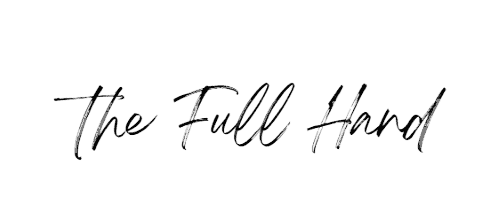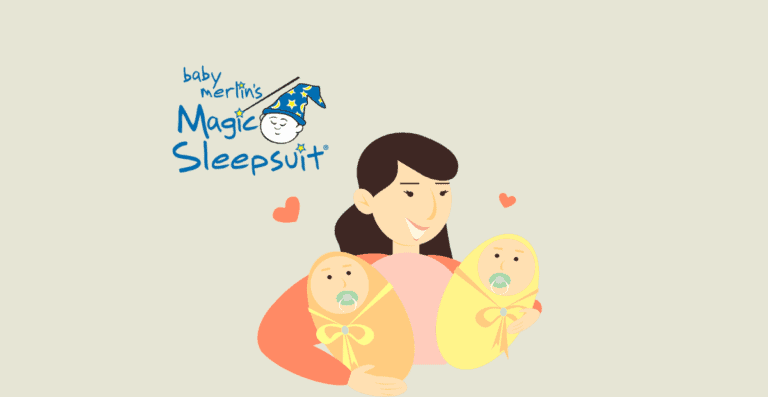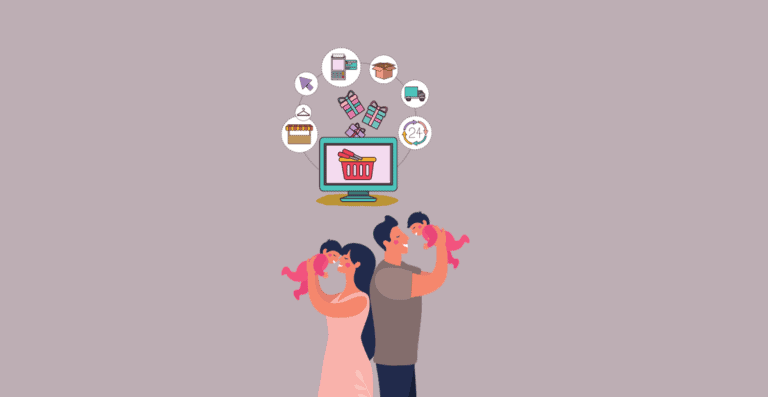The Big Little Feelings potty training course is designed to help parents navigate the often challenging and stressful process of toilet training their toddlers.
Chances are you probably saw this popular Instagram account, @biglittlefeelings, pop up in your feed or you may even follow them.
Deena Margolin and Kristin Gallant are the friends and moms behind the go-to resource for parents of toddlers. So when it came time to potty train my twins, I leaned on them for expertise.
Their comprehensive approach not only simplifies the potty training experience but also provides valuable insights into effective communication techniques, handling setbacks, and balancing family goals.
Big Little Feelings Potty Training Course Overview
The Big Little Feelings potty training course is a comprehensive program designed for busy parents, offering a stress-free approach to tackle every aspect of potty training your toddler.
The program offers a step-by-step process of 3.5 hours of content broken up into short videos and valuable resources such as printable PDFs with scripts, checklists, and other helpful tools.
It allows flexibility for parents to pause or review any section throughout their journey. Super nice given no parents have that big enough time to listen to or watch online videos.
This course has got you covered from preparing yourself mentally to dealing with setbacks during the potty training process. The practical tips provided make it easy for both parent and child to transition smoothly from diapers to being fully potty trained.
You’ll have a login to their platform and have full access to all six modules.
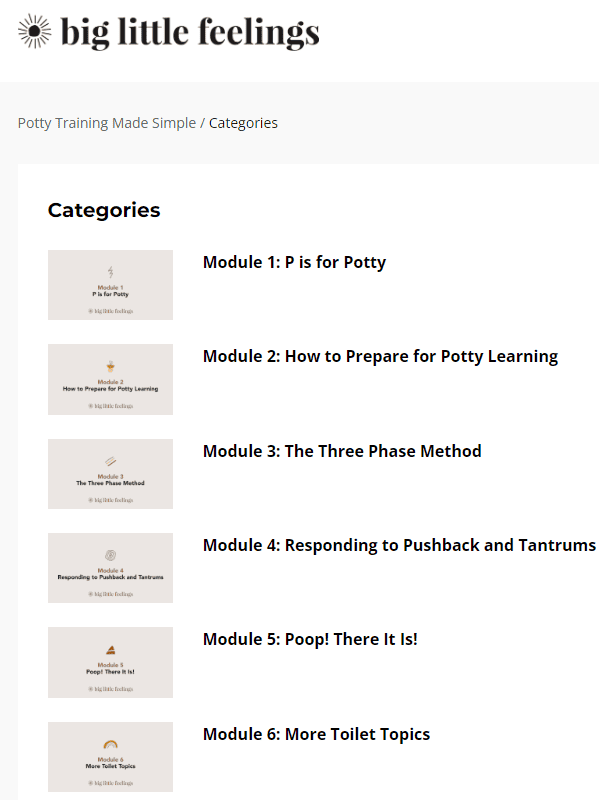
Implementation of the Course
Incorporating these courses into your daily routine can significantly improve not only your child’s progress but also reduce overall stress levels associated with this often challenging phase.
For me, I listened to all the prep videos the week prior while walking my dog. If I could multi-task another activity while listening to the videos, that worked best for me.
Focusing on individualized attention tailored specifically towards each child’s requirements during this crucial developmental stage ensures success in making progress toward becoming fully toilet trained.
Patiently observe: Look out for signs indicating that your little one is ready for toilet training before diving headfirst into action.
Create a comfortable environment: Make sure the potty training area is inviting and fun, so your child feels at ease while learning this new skill.
Consistency is key: Stick to a routine and maintain consistency in your approach for better results during the potty training process.
My Personal Experience with My Twins
Potty training a toddler was not a first for me. My husband and I went through this process with my oldest when he was around 2.5 years old.
He wanted to wear “big guy” underwear and it just clicked for him. When I say we hit the jackpot, we hit the jackpot.
Our twins, on the other hand, were another story.
They didn’t show any interest and we were up against a time crunch. They were starting 3-year-old preschool part-time and one of the school’s requirements was the boys needed to be potty trained. Not even pull-ups were allowed.
Yikes, bikes.
We had two weeks before school started. I knew of this course so when it came time, I purchased the $34 course and went all in.
Success in different stages
Stage 1: Time to sport the birthday suit – go naked! With it being August, we did try to hang outside most of the time. When living in a cooler region for most of the year, it’s important to consider the seasonal time frame. The warmer weather and sun played a significant role in improving the overall situation.
Also, let’s not forget about the rewards. Popsicles at 7 am? Sure, why not!
Both of our boys loved the freedom and thought it was fun going on the potty outside.
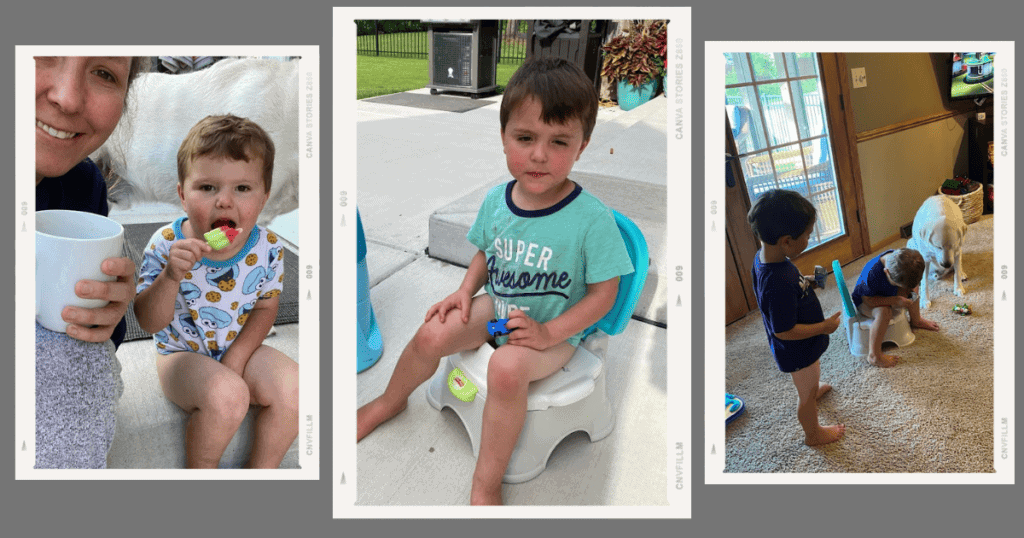
Stage 2: Loose clothing was introduced, but no underwear yet. This allowed both boys to easily access their potties whenever needed. They also started practicing pulling down their pants independently.
One of the things that stuck with me from the course was verbiage.
Remember to say “Push down your pants” instead of “Pull down your pants“. Kids are visual learners and using the word push vs pull makes a big difference.
To be honest, we saw way more accidents on this day than any other, but I knew that was okay and going to happen.
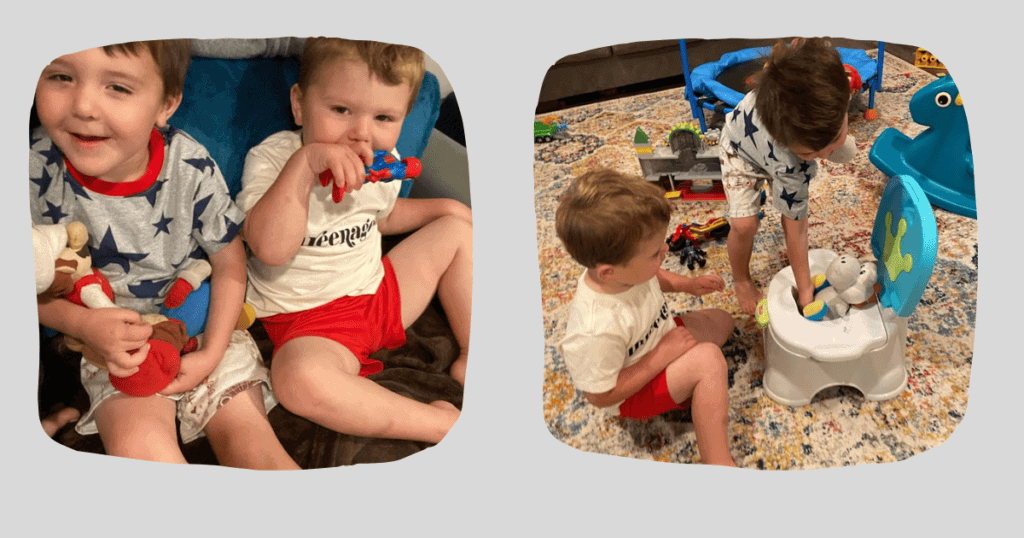
Stage 3: Introduce underwear and start with short trips outside the home. Short outings allowed them to gradually become more confident in managing their needs outside the safety net provided by being at home.
I must admit, this particular step had me freaked. Nevertheless, I was fully committed and compelled to give it a shot.
We did quick walks and even a 30-minute trip to our neighborhood park. We brought our Fisher Price potty to the park, but never needed it.
Handling setbacks
Setbacks can happen during any toilet training process.
Although Noel seemed more excited to use the potty, he’d often forget when playing, and that caused a lot of accidents and confusion for him. However, instead of becoming discouraged, we followed the course’s advice and remained patient. Understanding that setbacks are a normal part of learning was key in the preparation.
It took them about a full week to get used to underwear.
We never looked back nor reverted to diapers. We still used pull-ups at night, but getting them day-trained was the best next step forward for our family.
2024 Update
The twins are almost five years old now! It feels like just yesterday I was holding them in my arms as newborns. We do see accidents from time to time, but those mainly occur during the night time.
For nighttime training, we let them wear underwear when they were ready and limited fluids an hour before bed.
I hope my personal experience can highlight how effective the Big Little Feelings method can be when guiding parents through each stage of potty training.
By breaking down the process into manageable steps and providing support for potential challenges along the way, parents can feel confident in their ability to help their children make progress toward becoming fully potty trained.
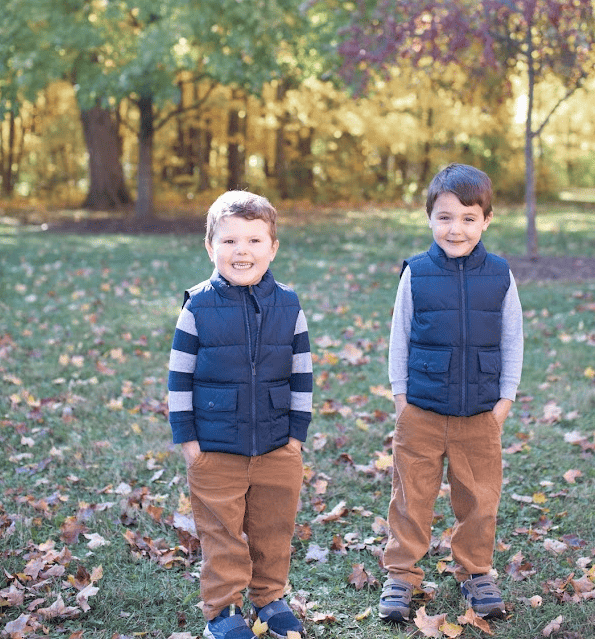
Appropriate Phrasing Techniques During Toilet Training Sessions
It’s essential to use positive and encouraging language while guiding your child through the potty training process. That is something we kept with us throughout the entire course!
Encouraging Positive Communication
Praise progress: When your child makes progress, such as successfully using the potty or staying dry for an extended period, praise their efforts. “Fantastic work.” or “You did so well.” are expressions to emphasize their successes.
Avoid negative language: Refrain from using words like “bad” or “naughty” when discussing accidents or setbacks. Encourage them to learn from their mistakes and provide support as they work through any difficulties.
Show empathy: If your child struggles with a particular aspect of potty training, acknowledge their feelings by saying things like “I know this is hard for you,” followed by offering support and encouragement.
Recognizing Signs of Readiness
In addition to using positive communication techniques during toilet training sessions, it’s crucial to recognize signs that indicate your child may be ready for full-fledged potty training. Some key indicators include:
Your child shows interest in the bathroom or imitates others’ toileting habits.
Their diaper stays dry for longer periods (at least two hours).
Your little one can follow simple instructions related to toileting, such as “Sit on the potty.”
They can communicate their need to go or have already gone.
Patience is paramount, even if your child appears interested; they may not be ready for full-fledged potty training yet. The Big Little Feelings course emphasizes taking your time and allowing your child to progress at their own pace. By focusing on positive communication and recognizing signs of readiness, you’ll be well-equipped to guide your little one through this essential developmental milestone.
Navigating Setbacks Post-Potty Training Completion
Setbacks are normal in the potty training process. Even after your child is fully potty trained, there may be moments of regression.
Here are some common reasons for setbacks and tips to overcome them.
Common Reasons for Setbacks
Illness: A sick child might have difficulty making it to the toilet in time, leading to more frequent accidents.
New environments: Changes in routine or surroundings can cause stress and confusion, potentially impacting your child’s ability to stay potty trained.
Growth spurts: As children grow, their bladder capacity increases – sometimes resulting in temporary setbacks during the adjustment period.
Sleep disruptions: Sleep issues such as nightmares or bedwetting could also affect daytime potty habits.
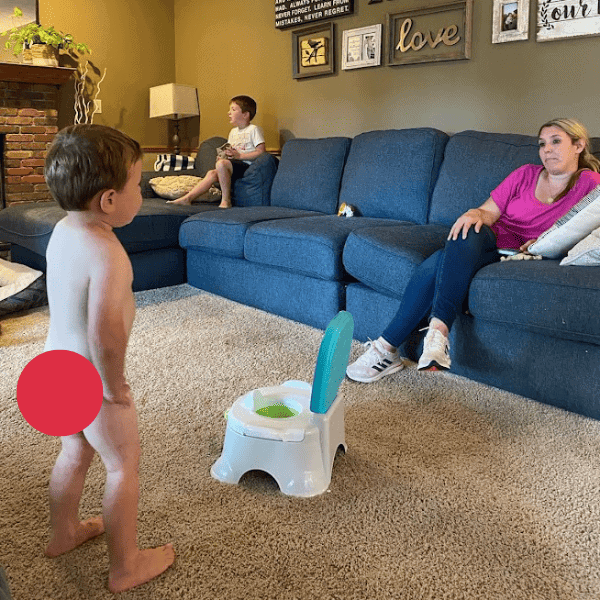
Tips to Overcome Regressions
Maintain consistency: Stick with familiar practices like using the same phrases and rewards system throughout all stages of the potty training process.
Show empathy & support: If your child experiences a setback due to illness, offer comfort and reassurance.
Revisit potty training techniques: Return to earlier stages of the potty training process, such as using a timer or offering gentle reminders about bathroom breaks
Seek professional advice: Consult with a pediatrician or other healthcare professional if you’re concerned that your child’s setbacks are more than just temporary hiccups.
Navigating post-potty training setbacks can be challenging, but remember: patience and consistency are key. By understanding common reasons for regressions and providing appropriate support, you and your child can overcome setbacks and continue on the path to success.
Course Pricing and Value for Busy Parents
The Big Little Feelings potty training course is an affordable option for busy parents seeking guidance on navigating this challenging phase.
When I purchased the course, I was already sick of buying underwear and portable toilets. However, this extra expense was well worth the investment.
Comparing costs with other potty training methods
Many potty training options can be expensive or time-consuming. For example, some parents opt for a professional consultant who may charge hundreds of dollars per session, while others purchase numerous books and DVDs which can quickly add up in cost. In contrast, the Big Little Feelings course offers a comprehensive program at a fraction of the price – making it accessible to families on any budget.
Pricing: The Big Little Feelings Potty Training Made Simple Course is priced at $34 and includes access to all videos and materials needed throughout your child’s journey.
Bonuses: When purchasing either course from their website, customers receive exclusive bonus content such as additional tips & tricks plus a 30-day money-back guarantee.
Long-term benefits of investing in the course
The value provided by this course goes far beyond just helping your child become fully potty trained. By implementing proven strategies tailored specifically towards each unique situation faced during this developmental stage, parents will gain confidence knowing they’re equipped to handle future challenges related to their little ones’ overall growth and development.
Furthermore, the Big Little Feelings method emphasizes one-on-one time with your child, fostering a strong bond and understanding between parent and toddler. This connection not only aids kids in the potty training process but also sets a foundation for effective communication as they continue to grow and develop new skills.
In short, investing in the Potty Training Made Simple course will provide you with invaluable knowledge that can be applied throughout your parenting journey – making it an investment well worth considering.
Tailoring Steps to Your Child’s Unique Needs
Big Little Feelings’ potty training method emphasizes one-on-one time with your child and offers a tailored approach to their unique needs. By focusing on individualized attention, each step is personalized for a smoother transition from diapers to potty.
Identifying Specific Challenges
Every child is different and may face unique challenges during potty training. Some may struggle with fear or anxiety around using the toilet, while others could have difficulty recognizing when they need to go. Identifying these issues is crucial to address them effectively. This personalized approach ensures targeted support based on your child’s needs.
Adapting Strategies Based on Progress
Successful potty training requires adapting strategies based on your toddler’s progress. Big Little Feelings’ courses offer practical tips and techniques designed for flexibility. Adjusting tactics may be needed depending on the speed of progress.
If accidents continue despite consistent efforts, revisit earlier stages of training or adjust communication methods.
In cases where resistance seems strong, explore alternative approaches like reward systems or new tools like a special potty chair or seat insert.
Remember, patience and persistence are key – potty training is a marathon, not a sprint.
Understanding your child’s unique needs and challenges during this important developmental phase is crucial for successful toilet training. With Big Little Feelings’ comprehensive courses, you can feel confident in your ability to navigate any bumps along the road as you guide your little one toward becoming fully potty trained.
Check out these potty training tips for more information.
Conclusion
The Big Little Feelings Potty Training Course is a flexible and comprehensive approach to toilet training toddlers. Parents can adapt strategies for multiple children and navigate different stages in potty training, while also learning appropriate phrasing techniques during toilet training sessions and tips for handling setbacks after completion.
Leveraging expert guidance from Big Little Feelings ensures successful transitions beyond toilet training, making it a valuable investment for any parent.
